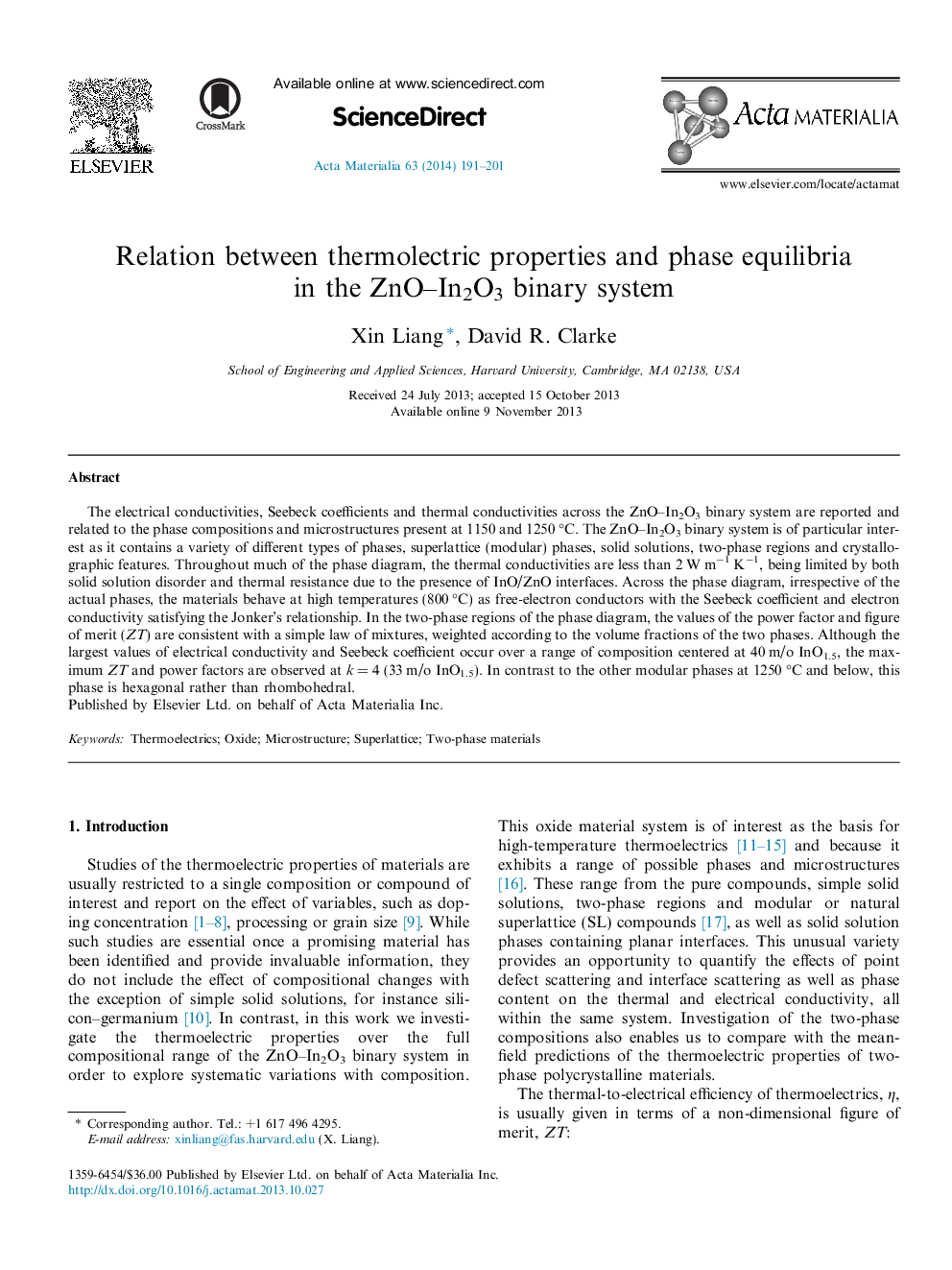| Article ID | Journal | Published Year | Pages | File Type |
|---|---|---|---|---|
| 1445905 | Acta Materialia | 2014 | 11 Pages |
The electrical conductivities, Seebeck coefficients and thermal conductivities across the ZnO–In2O3 binary system are reported and related to the phase compositions and microstructures present at 1150 and 1250 °C. The ZnO–In2O3 binary system is of particular interest as it contains a variety of different types of phases, superlattice (modular) phases, solid solutions, two-phase regions and crystallographic features. Throughout much of the phase diagram, the thermal conductivities are less than 2 W m−1 K−1, being limited by both solid solution disorder and thermal resistance due to the presence of InO/ZnO interfaces. Across the phase diagram, irrespective of the actual phases, the materials behave at high temperatures (800 °C) as free-electron conductors with the Seebeck coefficient and electron conductivity satisfying the Jonker’s relationship. In the two-phase regions of the phase diagram, the values of the power factor and figure of merit (ZT) are consistent with a simple law of mixtures, weighted according to the volume fractions of the two phases. Although the largest values of electrical conductivity and Seebeck coefficient occur over a range of composition centered at 40 m/o InO1.5, the maximum ZT and power factors are observed at k = 4 (33 m/o InO1.5). In contrast to the other modular phases at 1250 °C and below, this phase is hexagonal rather than rhombohedral.
